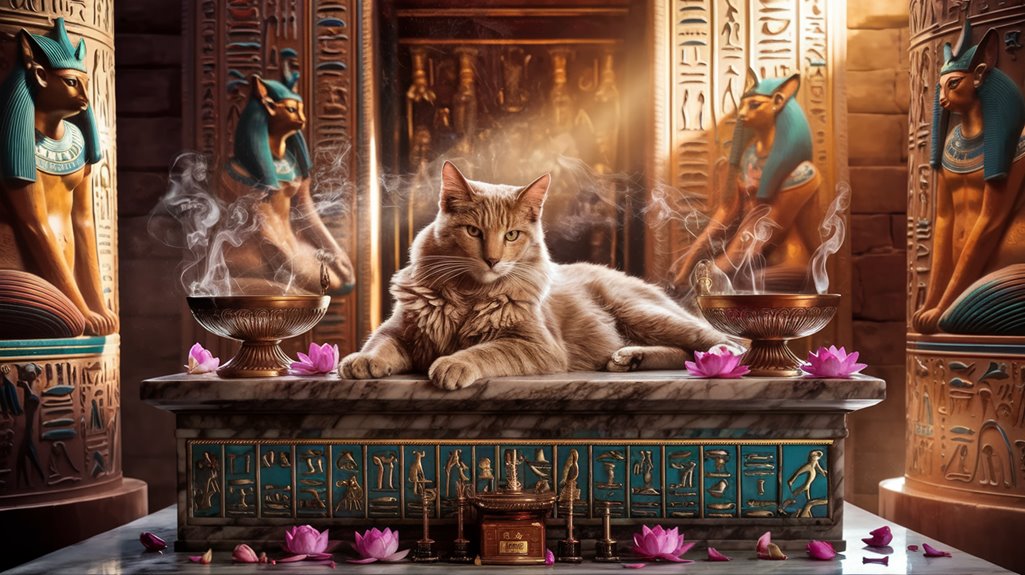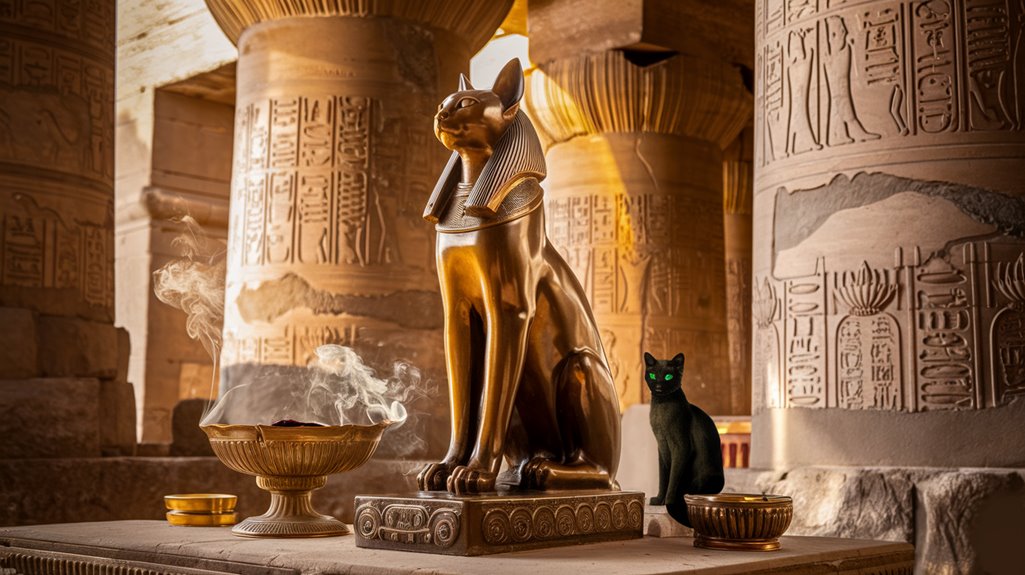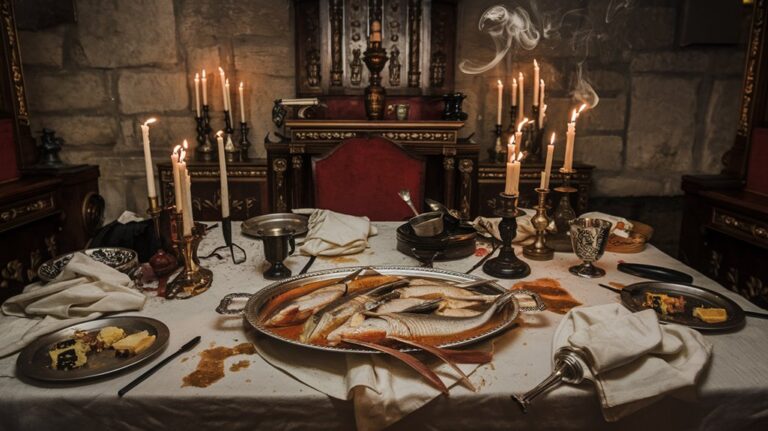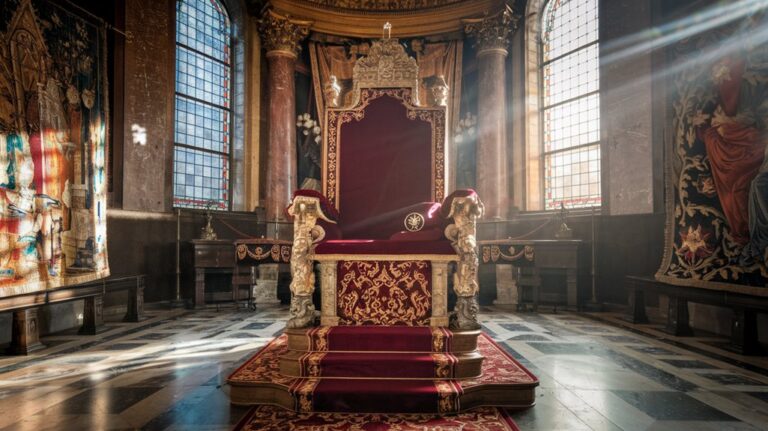Ancient Egyptians Regarded Cats as Sacred Animals
You'll find the ancient Egyptians' relationship with cats far more complex than simple pet ownership. Unlike today's casual companionship, cats held divine status in Egyptian society, wielding influence from temples to households. They weren't just mousers or companions; they were living embodiments of the gods themselves. This sacred bond between Egyptians and felines shaped their laws, art, and religious practices in ways that continue to fascinate scholars and challenge our modern understanding of human-animal relationships.
The Divine Nature of Egyptian Cats
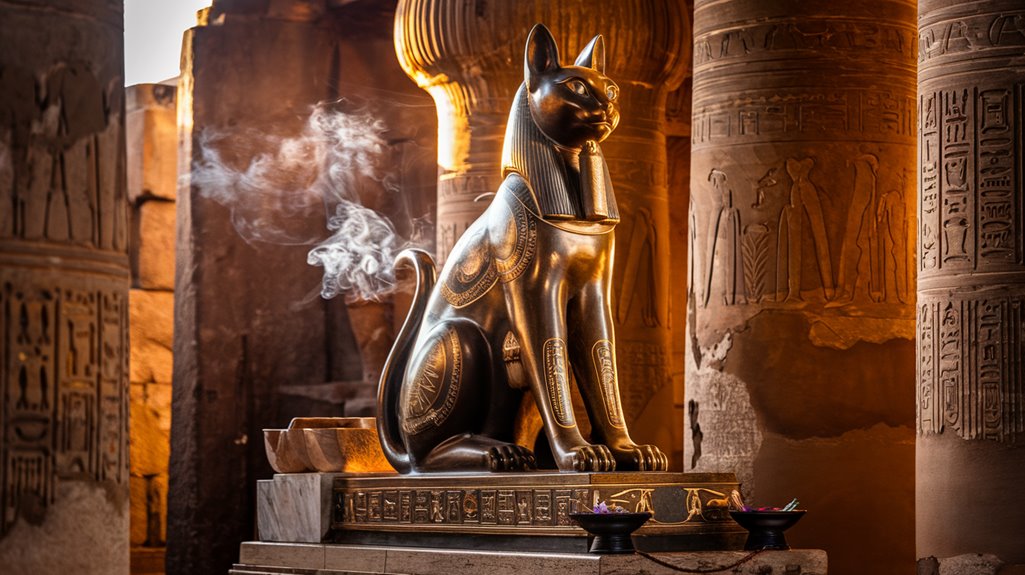
In ancient Egypt, cats possessed more than just physical form – they carried divine essence within them, connecting the mortal world to the domain of gods.
You'll find this divine connection most strongly linked to Bastet, the cat-headed goddess who embodied fertility, music, and pleasure. These sacred felines weren't just pets; they served as living vessels of divine protection, guarding homes and temples from evil spirits. As protectors of the sun god, cats rode through the sky with Ra during his daily journey.
The Egyptians took this feline symbolism so seriously that they mummified hundreds of thousands of cats, believing they'd carry messages to the gods. Parents even showed their reverence by naming children after cats, especially for their daughters.
You could even purchase these mummified cats as offerings to Bastet, hoping to receive her blessings in return. The cats' dual nature – both nurturing and fierce – perfectly represented the balance that ancient Egyptians sought in their spiritual lives.
Sacred Roles in Egyptian Religion
While cats held various positions in ancient Egyptian society, their most profound role emerged through religious practices and rituals.
In Egyptian feline mythology, cats served as divine vessels, especially as representatives of the goddess Bastet, who embodied fertility and pleasure. You'll find that cat symbolism extended far beyond mere representation – these creatures were believed to carry actual divine energy within them. Ancient Egyptians would even shave their eyebrows when mourning the death of a cherished cat.
The religious significance of cats manifested in elaborate practices. You'd see temples maintaining large catteries specifically for ritual purposes and the mummy trade. The pharaoh owned every single cat in Egypt, reinforcing their divine status in society.
Pilgrims would purchase mummified cats as offerings to Bastet, believing this would restore divine energy. This sacred status granted cats unprecedented legal protection – harming one could result in death, as they were considered living embodiments of divine power.
Feline Deities and Their Significance
Ancient Egyptian feline deities represented a complex spiritual hierarchy, with Bastet emerging as the most prominent figure among them.
You'll find that Bastet's evolution from a fierce lioness to a gentler cat-headed goddess reflects the changing cultural reverence toward felines in Egyptian society.
The feline symbolism embodied dual aspects: both nurturing and protective. Egyptians deeply valued cats for their ability to be both graceful and dangerous creatures.
When you look at Bastet's roles, you'll see she served as Ra's guardian during his nightly journey through the sky while also presiding over fertility, health, and domesticity. Worshippers often presented sistrum and aegis offerings to honor her protective nature.
She wasn't alone in the pantheon – other feline deities like Mafdet controlled different domains, including justice and execution.
This divine association led Egyptians to mummify cats and create thousands of bronze statuettes, believing these animals carried their deities' sacred essence.
Cat Mummification Practices
The sacred reverence for cats manifested most powerfully in Egyptian mummification practices, dating back to 3800 B.C.
You'll find that cat symbolism played a crucial role in these rituals, as Egyptians believed mummification would guarantee both cats and their owners could reunite in the afterlife.
The mummification techniques were intricate and precise, involving:
- Treatment of the body with sodium carbonate and sodium bicarbonate
- Application of preservative materials like pistacia resin, conifer resin, and cinnamon
- Careful wrapping in fine linen with spices and cedar oil
You'll be amazed to learn that entire farms were dedicated to breeding cats specifically for mummification.
Chemical analysis reveals that cats received a special mixture consisting of 80% fats and oils combined with other preservative resins.
The process was so important that killing a cat was considered a serious crime, and thousands of mummified cats were offered as votive sacrifices during festivals at Bubastis.
Archaeological evidence shows many mummified cats suffered skull fractures and strangulation before death, suggesting their treatment wasn't always as reverent as believed.
Cat Protection Laws and Social Status
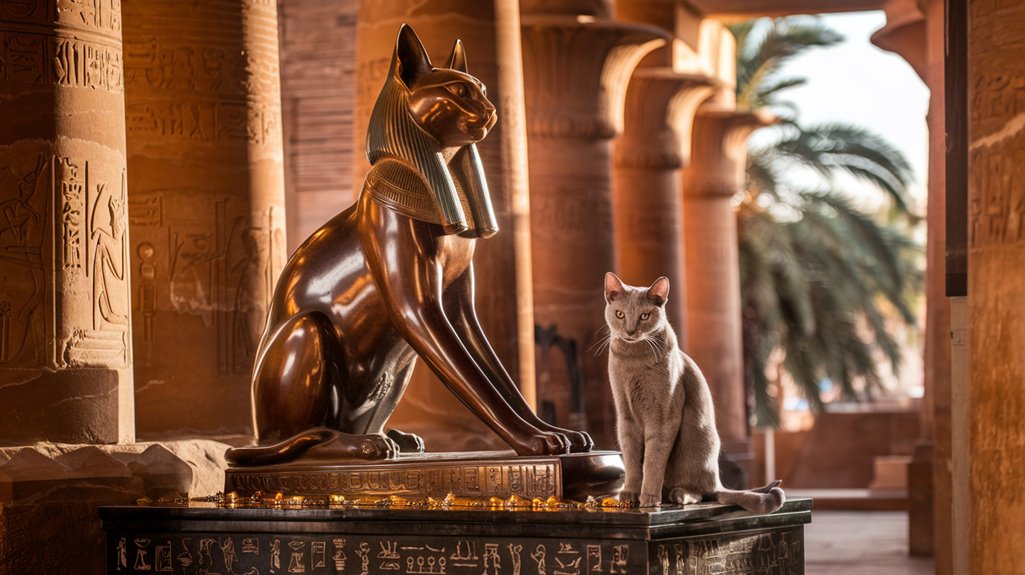
Legal protections for cats in Egypt reached unprecedented levels, making them among the most safeguarded creatures in ancient civilization. You'd face death if you killed a cat, whether accidentally or intentionally, and you couldn't export them outside Egypt's borders. Classical writers like Herodotus documented the severe punishments for harming these sacred animals.
Cat symbolism was deeply woven into society, with felines representing wealth, prestige, and divine protection. They were often adorned with jewelry to showcase their special status in noble households.
Feline rights were remarkably advanced for their time, with cats enjoying a status equal to human family members. You'll find evidence of their importance in how Egyptians mourned their deaths by shaving their eyebrows and gave them personal names like Ta-miu.
The connection to Bastet, the cat goddess, further elevated their standing, as did their practical role in controlling pests and killing dangerous animals like snakes.
Archaeological Discoveries of Sacred Cats
Spanning across Egypt's most sacred burial grounds, archaeological discoveries have revealed an astounding wealth of cat-related artifacts and mummies. At the Saqqara Necropolis, you'll find a remarkable 4,500-year-old tomb containing sacred symbols of feline devotion, including gilded wooden statues and bronze representations of Bastet. The dozens of mummified cats discovered in this ancient tomb demonstrate the scale of animal preservation practices.
These discoveries highlight cats' cultural significance through:
- Vast cat cemeteries at Speos Artemidos, Bubastis, and Saqqara containing millions of mummified cats
- Temple complexes where priests maintained a thriving cat mummification industry
- Elaborate tomb paintings depicting cats as royal companions and protectors
Archaeological evidence from Gizeh shows that African wildcats and jungle cats were most commonly mummified, while findings at Bubastis reveal massive festivals where pilgrims offered cat mummies to honor Bastet. Many priests profited from this practice as they operated a lucrative mummification business that helped support temple operations.

